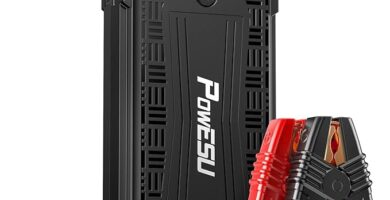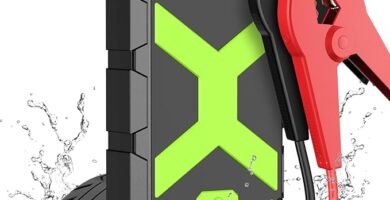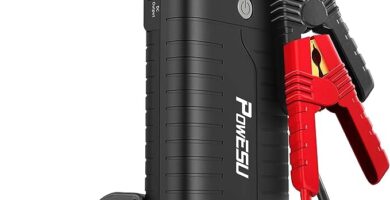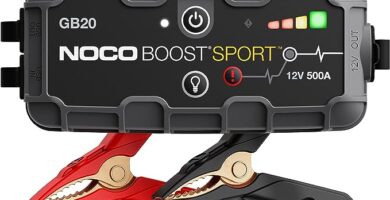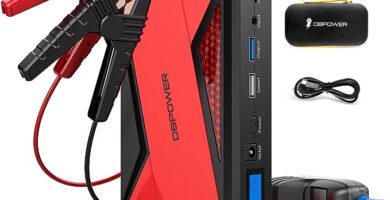
¿What is a Battery Jump Starter?
A battery jump starter, also called a boost, is a procedure of starting a motor vehicle (most common cars or trucks) that has a discharged battery. A temporary connection is made to the battery of another vehicle, or to some other external power source. The external supply of electricity recharges the disabled vehicle’s battery and provides some of the power needed to crank the engine. Once the vehicle has been started, its normal charging system will recharge, so the auxiliary source can be removed. If the vehicle charging system is functional, leaving the engine running will restore the charge of the battery.
Advantages and Disadvantages using
| Advantages | Disadvantages |
|---|---|
| ✔️ You don’t need to ask for help when you have a jump starter. | ✖️ Jump starters don’t have enough power to charge a battery completely. This means that if the battery is empty, a jump starter will provide enough power to turn your car on. But the battery itself will still have to be recharged using a different method. |
| ✔️ There’s no accessibility concerns. | |
| ✔️ Twice the connections means twice the chance for issues. | |
| ✔️ Concerns of damage to the host vehicle. | |
| ✔️ Today’s vehicles make booster cables inherently risky. |
Why everyone need a jump starter?

- Emergency Preparedness: A jump starter is an essential tool to have in your vehicle for emergencies. When your car battery unexpectedly dies, a jump starter allows you to start your vehicle without relying on external assistance. This can be especially crucial in remote areas or during inclement weather when help may not be readily available.
- Time and Convenience: Waiting for a tow truck or roadside assistance can be time-consuming and inconvenient. Also, with it, you can quickly and easily restart your car, allowing you to get back on the road promptly.
- Cost Savings: Calling a tow truck or a service technician to jump-start your car can be expensive. Investing in a jump starter can help you avoid these costly service charges, making it a cost-effective solution in the long run.
- Independence: Owning a jump starter gives you independence and self-reliance. You don’t have to rely on the kindness of strangers or wait for assistance to arrive. Besides, you have the power to resolve your battery issues independently.
- Versatility: Many modern jump starters come with features such as USB ports for charging devices, built-in flashlights, and air compressors for inflating tires.
- Safety: Using a jump starter is a safe way to jump-start your vehicle compared to traditional methods like jumper cables.
- Peace of Mind: Knowing that you have a jump starter in your car provides peace of mind. You can embark on your journeys with confidence, knowing that you have a reliable backup plan in case of a battery failure.
In summary, purchasing a jump starter is a wise investment that offers you convenience, cost savings, and peace of mind in case of unexpected car battery issues. It’s a tool that can come to your rescue when you need it most and ensure that you’re not left stranded on the road.
Things to Consider When Shopping for a Jump Starter
Your guide to Choosing a Portable Jump Starter
When it comes to selecting the perfect portable jump starter, several crucial factors can influence your decision. Let’s dive into them:
Battery Capacity – Power matters
Firstly thing you should consider is the jump starter’s battery capacity. Look for one that can deliver enough power to jump-start your vehicle’s engine. Certainly, check for the peak current rating, often measured in amps, to ensure compatibility with your car.
Safety Features
Safety should be a top priority when choosing a jump starter. Ensure that the device has safety features like overcurrent protection, short-circuit protection, and reverse polarity protection. These features not only protect your vehicle but also enhance user safety.
Portability and Size
A portable jump starter should be, well, portable. In summary, consider its size and weight. To sum up, it should be compact enough to store easily in your vehicle and lightweight enough to carry without hassle.
Jump Starter Type
There are different types of jump starters, in other words, traditional jump cables, lithium-ion jump starters, and lead-acid battery jump starters. Each has its advantages and disadvantages. Lithium-ion jump starters, for example, are compact and lightweight, while lead-acid jump starters are more robust but heavier.
Extra perks
In addition, some jump starters come with additional features like built-in flashlights, USB charging ports, and air compressors. Think about your specific needs and whether these extras would be beneficial to you.
User-Friendliness – Ease of Use
A user-friendly design is essential, especially in stressful situations. Look for a jump starter with clear instructions, simple operation, and intuitive interfaces. You don’t want to be fumbling around in an emergency.
Top 10 jump starters comparison
 | 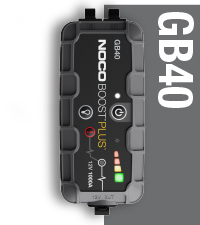 | 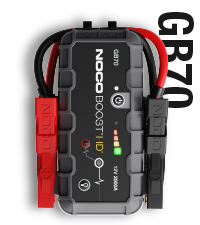 | 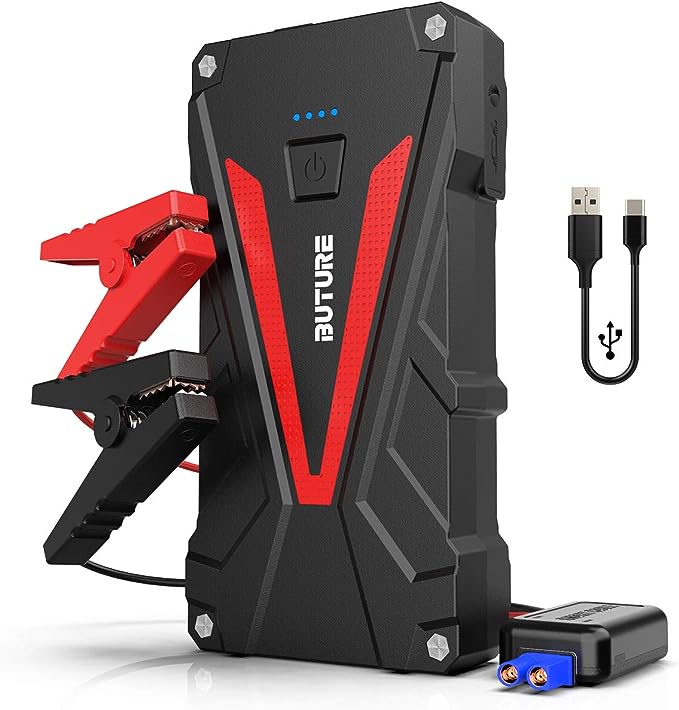 |  | |
| Model | Beta03 | GB40 | GB70 | BR500 | MF139 |
| Amps | 5000 Amps | 1000 Amps | 2000 Amps | 2000 Amps | 1750 Amps |
| Gas Engines | All Gas | Up to 6.0 Liters | Up to 8.0 Liters | Up to 8.0 Liters | Up to 7.5 Liters |
| Diesel Engines | Up to 10.0 Liters | Up to 3.0 Liters | Up to 6.0 Liters | Up to 6.5 Liters | Up to 5.0 Liters |
| 12V Power Port | ✔ | ✘ | ✔ | ✔ | ✔ |
| User Satisfaction | 4.9/5 | 4.7/5 | 4.7/5 | 4.6/5 | 4.6/5 |
| Hightlight | The best rated | Top Sales | The most balanced | Best quality price | Air compressor 150PSI |
 |  |  |  |  |
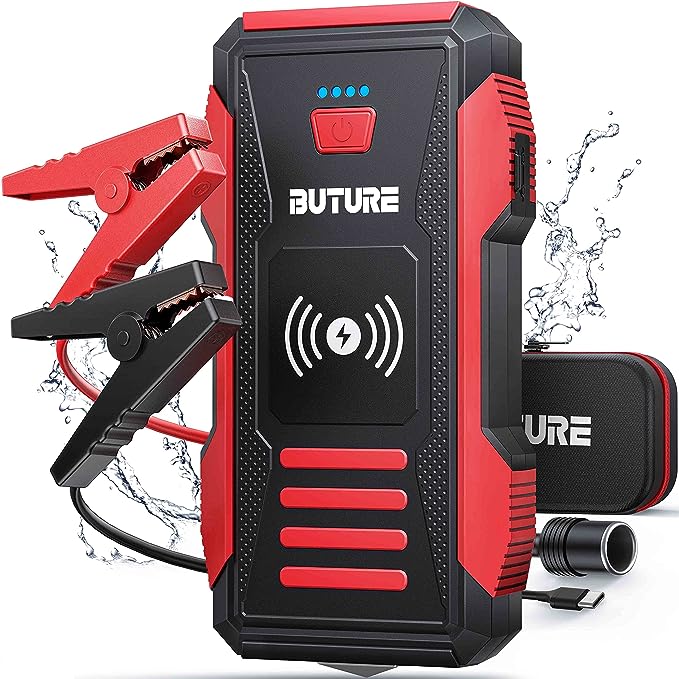 | 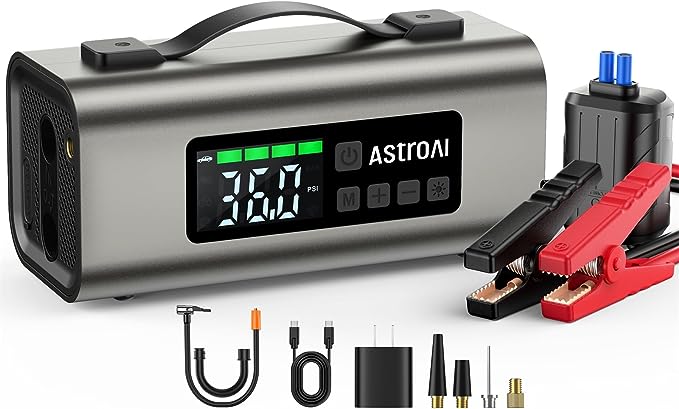 | 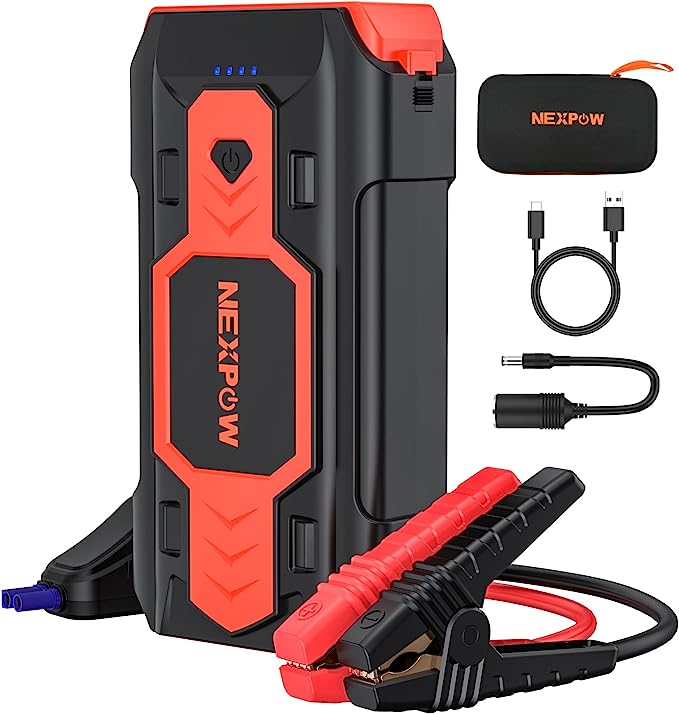 |  |  | |
| Model | BR600 | MF159 | Q9B | G17 | GBX155 |
| Amps | 4000 Amps | 2500 Amps | 2500 Amps | 2000 Amps | 4250 Amps |
| Gas Engines | All Gas | Up to 7.5 Liters | Up to 8.0 Liters | Up to 7.0 Liters | Up to 10.0 Liters |
| Diesel Engines | Up to 8.0 Liters | Up to 5.0 Liters | Up to 8.0 Liters | Up to 6.5 Liters | Up to 8.0 Liters |
| 12V Power Port | ✔ | ✔ | ✔ | ✔ | ✔ |
| User Satisfaction | 4.6/5 | 4.6/5 | 4.5/5 | 4.5/5 | 4.4/5 |
| Hightlight | 2 Best quality price | Air compressor and Air pump | Good price | 3 best sellers rank (amazon) | Fast charger |
 |  |  |  |  |
More details about top 10 best jump starters
How to Maintain Your Car Battery Jumper – PRO Tips
If you own a portable jump starter or are considering getting one, it’s crucial to understand how to keep it in top-notch condition
- Regular Inspection for Optimal Performance of Your Car Battery Jumper
- Proper charging is crucial to maintain the functionality of your car battery jumper.
- Storage. Proper storage is equally important, especially if you don’t use your jump starter frequently.
- Regularly testing your jump starter ensures that it’s in working condition when you need it.
- Whenever possible, store your jump starter in a moderate temperature environment between 50 ºF – 70 ºF. Like vehicle batteries, exposure to extreme temperatures is detrimental to jump starter batteries, both in the short term and long term.
- Respect the cycles. Every jump starter is subject to a duty cycle in which the vehicle can be cranked only so long before a period of rest is needed. For almost all jump starters, the recommended duty cycle is between 5-6 seconds of cracking followed by 3-5 minutes of rest.
- Clean clamps. A battery in poor condition may have battery acid on the posts, so wiping down the clamps after jump starting a vehicle always is a good practice to keep the clamps from becoming corroded
If you want more information about how to maintain your car battery jumper click here.
Best battery jump starter reviews
Frequently asked questions and doubts
What are the disadvantages of a jump starter?
Jump starters don’t have enough power to charge a battery completely. That is to say that if the battery is empty, a jump starter will provide enough power to turn your car on. But the battery itself will still have to be recharged using a different method.
Is a portable jump starter worth it?
Every motorist can benefit from having a jump starter sooner or later. In colder weather for example, keeping a portable starter in the garage on the charger is a great way to help a sluggish battery on a cold morning. After using your jump starter you can then just throw it in the boot or glove box in case you need it later.
5 Benefits of using a portable jump starter.
- You don’t need to ask for help when you have a jump starter.
- There’s no accessibility concerns.
- Twice the connections means twice the chance for issues.
- Concerns of damage to the host vehicle.
- Today’s vehicles make booster cables inherently risky.
For this reason, everyone need a jump starter.
What is the difference between a jump starter and a power station?
A jump starter is a compact device designed specifically to start a vehicle with a dead or drained battery. A power station is a versatile device that provides electrical power for various applications beyond jump-starting a vehicle.
How many amps do i need to jump-start my car?
Without any unnecessary details, a car will need anywhere from 400 to 600 amps for its battery to start. However, there are cases where smaller cars only take 150 amps to get their batteries going. But larger vehicles like trucks will require much more to start –up to 2,000, to be exact.
Are jump starters better than jumper cables?
The most obvious advantage of a jump starter is the fact that it eliminates the need to find someone to loan their car to be used as a host vehicle, which is required when using booster cables.

